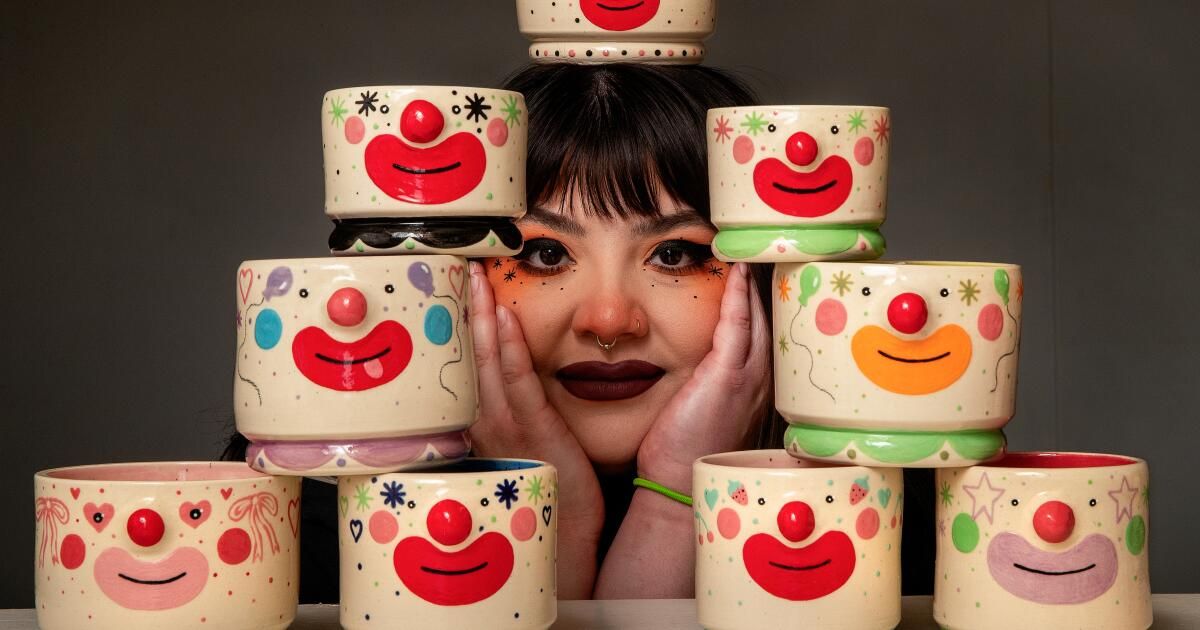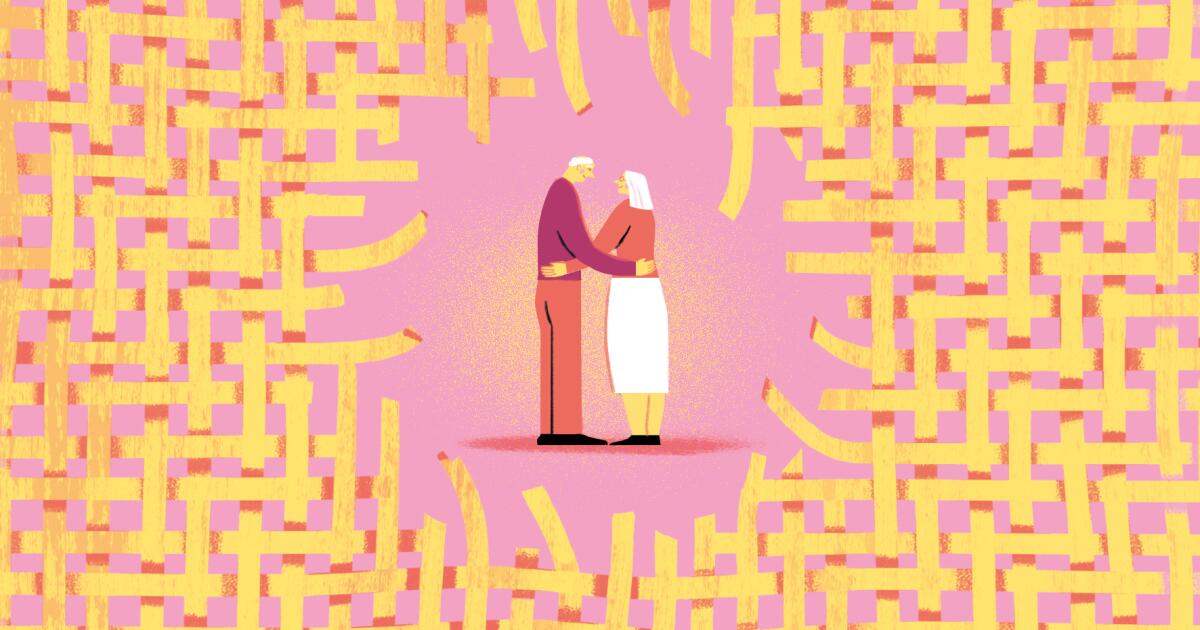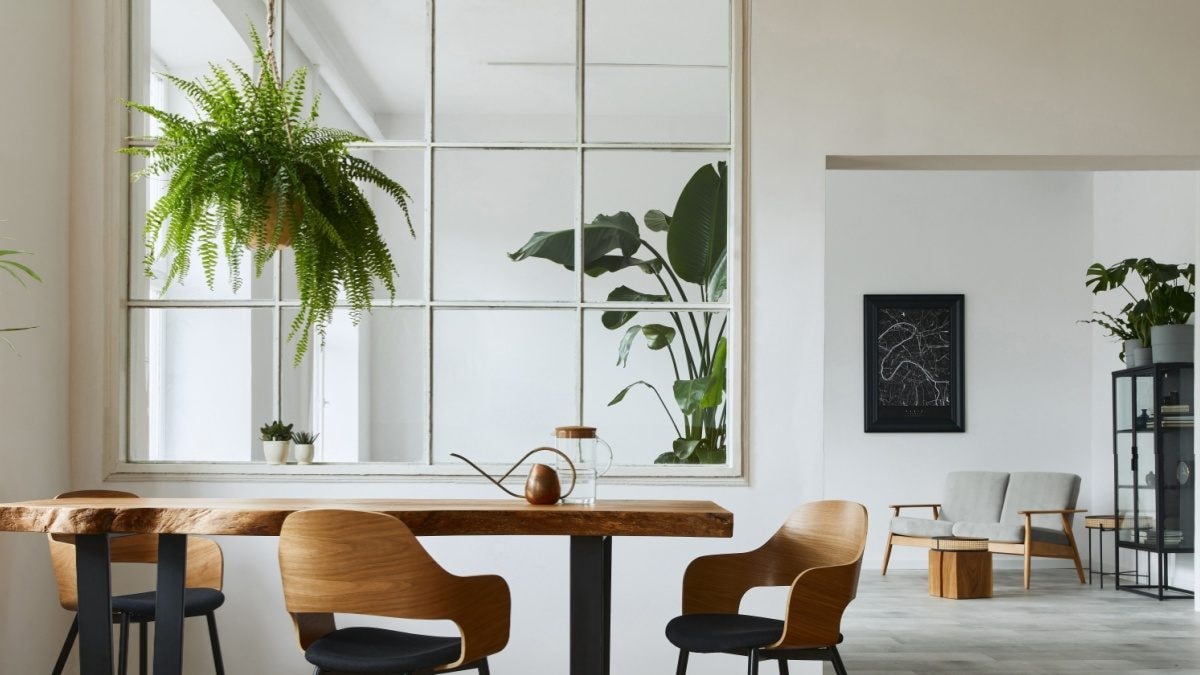Soraya Hannah Yousefi didn't start her career with an internship or entry-level position; She started with a box of air-dried clay and an Instagram account.
It was May 2020 and her life felt upside down when she graduated from Cal State Northridge with a bachelor's degree in communication studies. Yousefi lived with his parents in the San Fernando Valley and, like many twenty-somethings, was rejecting job applications in vain in the midst of a global pandemic. However, that strange, stagnant period propelled her to pursue a career as a full-time artist.
In Yousefi's home studio there is a “Get What You Get” dispenser.
(Mel Melcón / Los Angeles Times)
“You know how people say, 'Oh, Michael Cera was in the right place at the wrong time and now he's a top actor,'” Yousefi said, referring to a common joke on the internet about how to wax does not enjoy be an actor. “I'm like the Michael Cera of ceramics, where I was just in the right place at the right time.”
Today, Yousefi, 28, is known as shy.jpeg to more than 50,000 people around the world. instagram and Tik Tok. (His username was inspired by his initials: SHY.) He has gained a devoted following by making colorful ceramics that look like clown faces (bowls, mugs, ashtrays) that he sells so much in his website and at local retailers such as Just what I kneaded bakery and shop in Bob Baker Puppet Theater (for which you have created several batches of limited edition mugs and mugs).
It's easy to understand why Yousefi's work gained momentum so quickly; His vibrant, whimsical ceramics are profoundly different than the neutral, earth-toned items often seen in traditional pottery stores. The bright clowns are emotional and boisterous: each face is painted with a different mood, color palette and small decorations that imitate their own eye makeup. The characteristic elements are a cartoonish clown smile and a bulbous nose that people can use as a kind of cup handle.
“I'm in this place where I can't work fast enough for the demand I have,” said Yousefi, who sells about 200 clowns online each month, although demand for his pottery is much higher. “My last drops run out in a matter of minutes, which is crazy. As soon as I finish a bulk order, I have another one waiting for me in my email.”
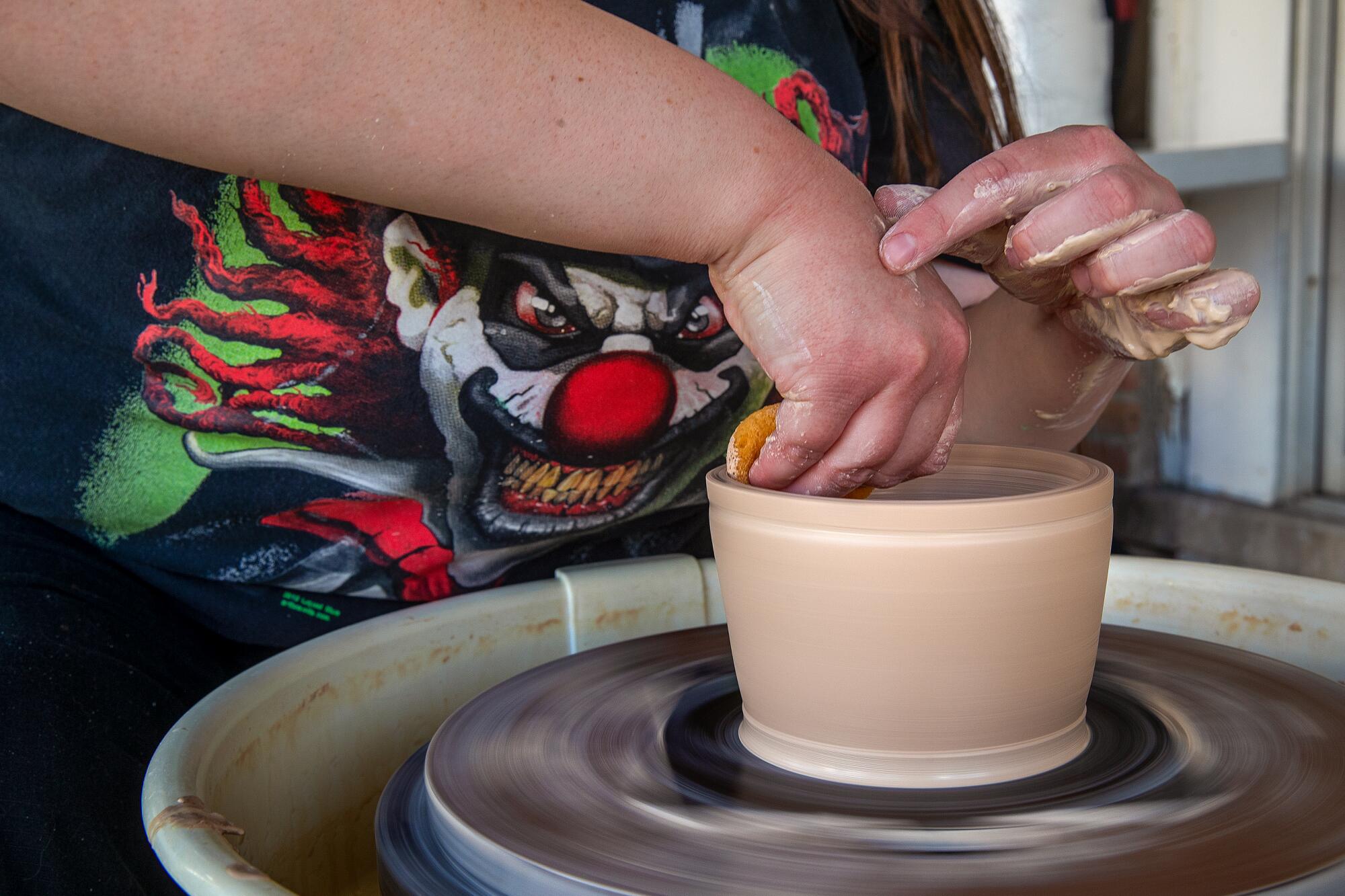
Yousefi works with clay in the studio of her home in Northridge.
(Mel Melcón / Los Angeles Times)
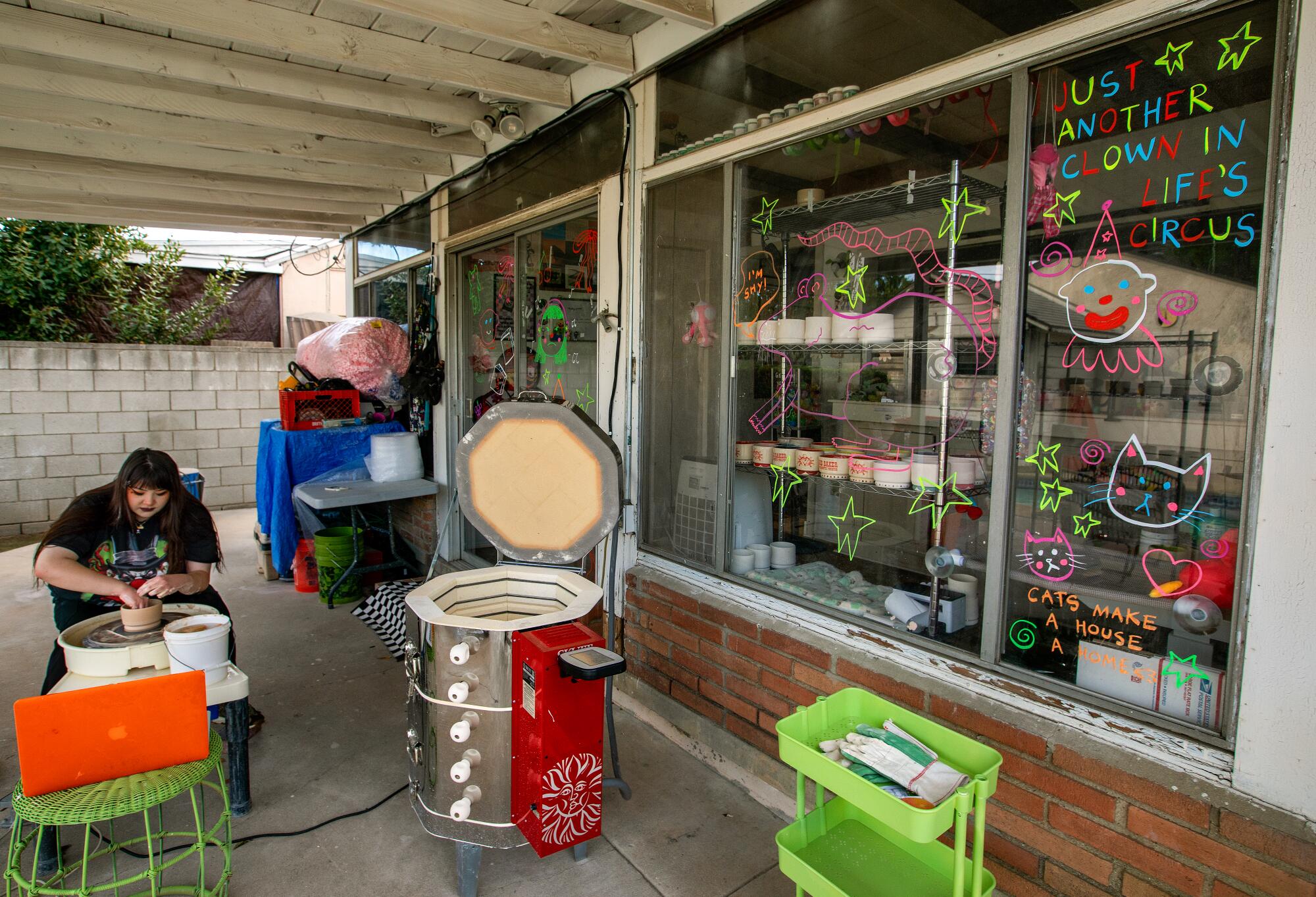
“I don't know if people realize that I'm just a girl in her home studio doing this one by one,” Yousefi said.
(Mel Melcón / Los Angeles Times)
Perhaps it has something to do with generational aesthetics, but Yousefi has noticed that many of the people who gravitate toward his maximalist work online and in person appear to be members of Generation Z and millennials. “Older people look at me like I'm crazy,” he said. “They just don't get the vision. I have disgraced the culture of pottery.”
Although he never imagined this career, Yousefi has always had many artistic hobbies. Around her desk, it's easy to spot the fruits of some of the different crafts she's tried: there are doodles, paintings, necklaces, magnets, keychains and buttons scattered across her ceramic pieces, and she's also taken to putting on makeup, touching up bags and giving gifts. to the people. paste and poke tattoos.
But when it comes to Yousefi's journey as a ceramist, she found herself exceptionally focused and motivated.
“I took a ceramics class in high school and I loved it, and I always wanted to do it again,” Yousefi said. “For years I asked my best friend, 'Let's take a pottery class, let's do it.' And we never did it, and I was too afraid to do it alone.”
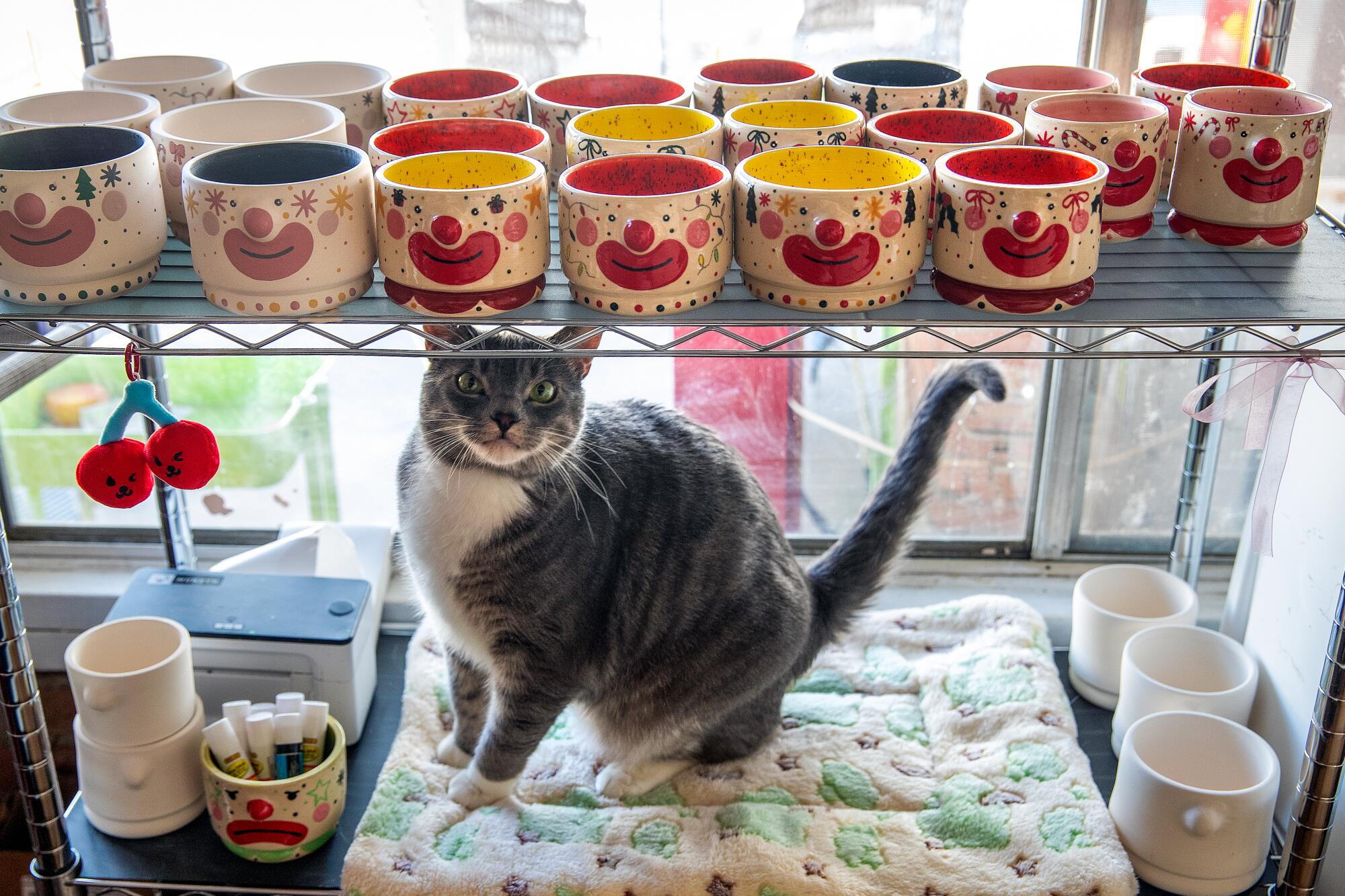
Yoshi, Yousefi's cat, takes a closer look at the cups and bowls.
(Mel Melcón / Los Angeles Times)
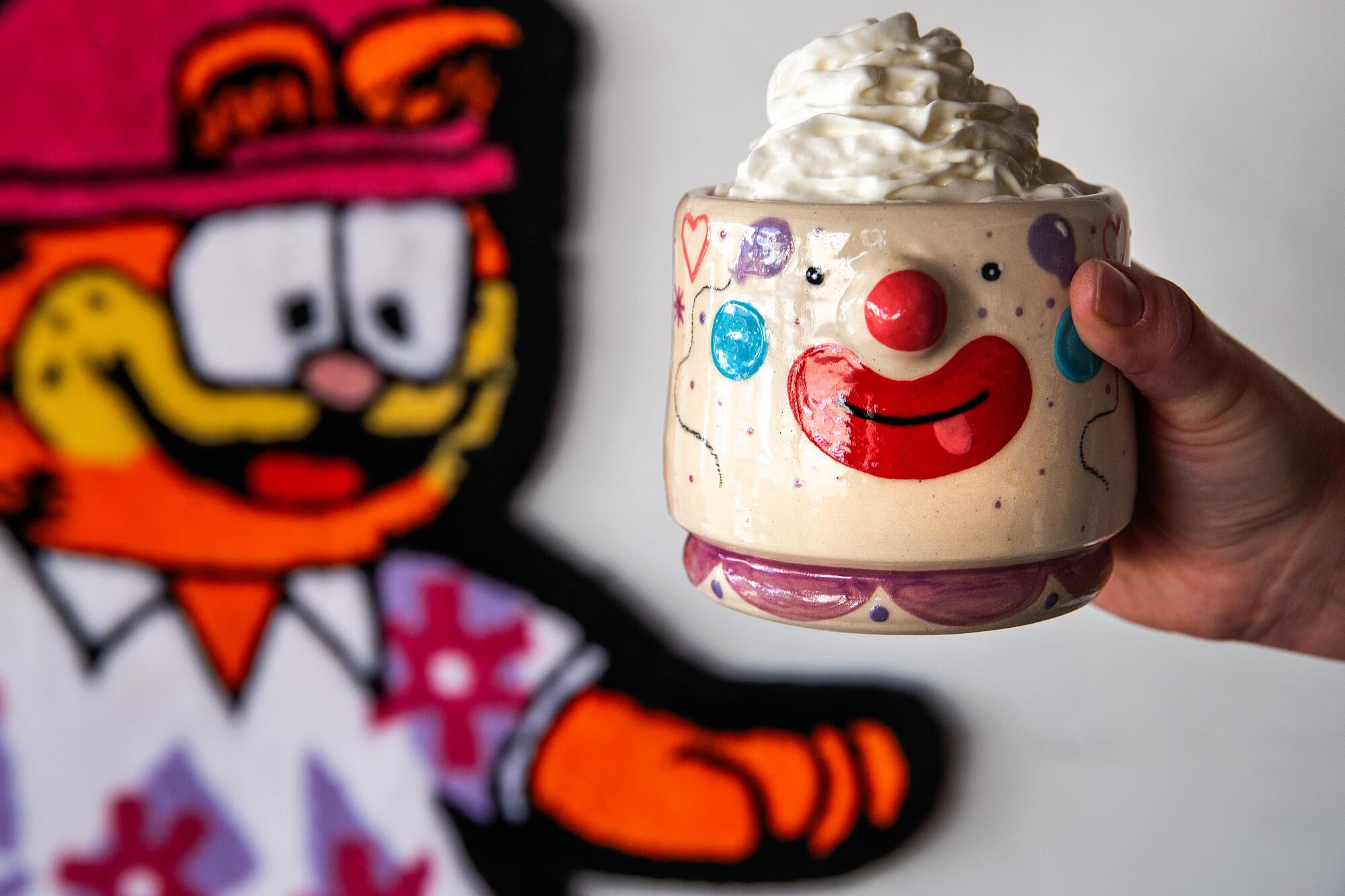
(Mel Melcón / Los Angeles Times)
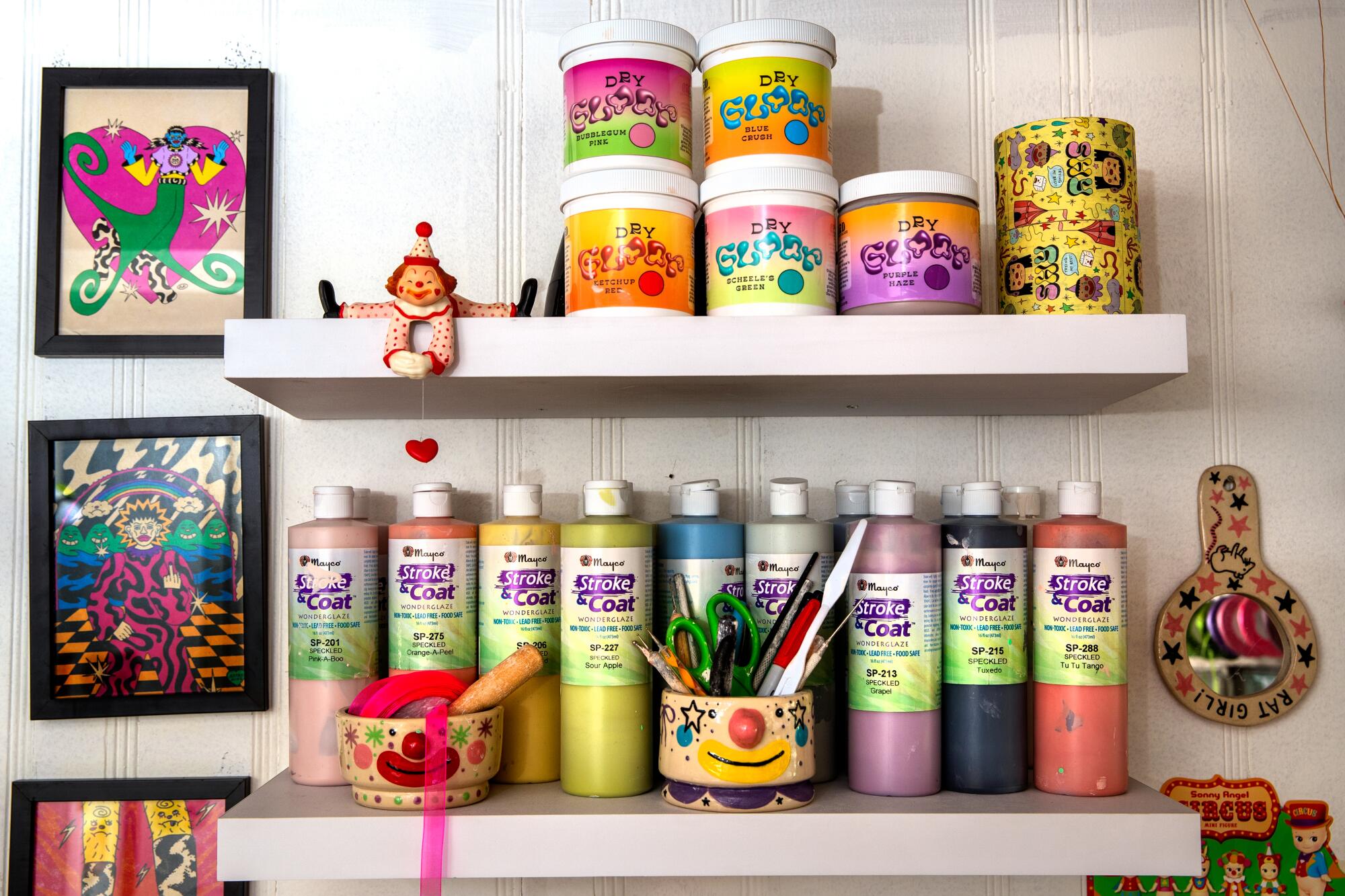
Glazes used to create cups, bowls and ashtrays.
(Mel Melcón / Los Angeles Times)
Even from that high school class, Yousefi had a basic idea of how to work with air-dried clay. “I don't know what it was about at the end of 2020,” he said. “I think it was just about having all the free time to just sit down and commit to something. “All day, every day, I was sitting there building my little pots by hand and painting them.”
When she posted pictures of her air-dried cups and bowls online, people immediately started commenting that they wanted to buy her pottery. As exciting as it was, she quickly realized there would be much more to learn.
“I was definitely selling my pieces too soon,” she said, “because I was selling these pots and then I was getting messages from people saying, 'Hey, I put a plant in this, watered it, and then it exploded. .'”
Soon, Yousefi found a man named Fish who was selling his late mother's oven on Craigslist. Although he was too small and still used air-dried clay (which cannot be fired in a kiln), he bought it for $400. In April 2021, Yousefi saw an ad for a four-week wheel throwing class at Pottery Studio and decided to sign up for a class at their Sherman Oaks location.
There, he was able to learn how to use a pottery wheel and transition to kiln-fired clay, which allowed him to begin producing pieces more consistently. When he posted his pieces online, he often coincided with popular trends. He placed colorful designs featuring frogs and cows on various ashtrays and vases and played with different nostalgic toy-inspired designs. But for some reason, the videos of him and the ceramic photographs of clowns always seemed to do better than the rest.
“I accidentally became the clown girl,” she said.
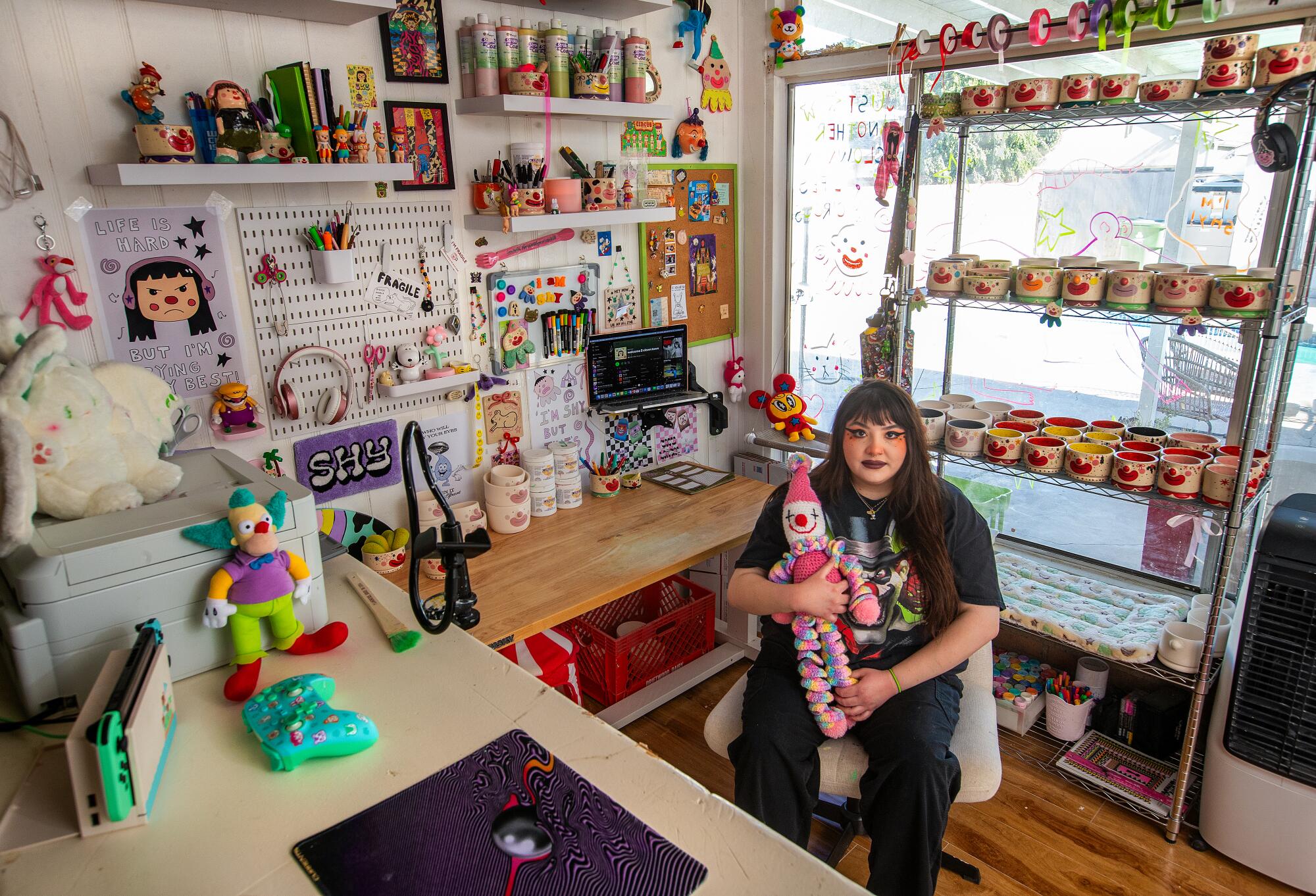
Yousefi has amassed a large collection of clown paraphernalia.
(Mel Melcón / Los Angeles Times)
Yousefi certainly likes clowns, but she's not obsessed with them in the way people might assume when they see her art. But her life gave her lemons and she decided to make clown glasses full of lemonade.
“I think clowns are just dumb and I think life is dumb,” he said. “And people my whole life have told me that I wear clown makeup. “I think I subconsciously have a thing for clowns.”
Once he purchased a pottery wheel in early 2022, Yousefi began making his clowns at home and taking them to the Pottery Studio kiln, but as his sales grew, he realized he would need a faster way to fire his parts. Taking his work to a community studio to fire him meant that wait times could be long and totally out of his control, and he wanted to keep up with the pace of orders he received.
I also wanted to start using vibrant Cone 5 glazes on their ceramics, which would not be possible in a Cone 10 studio like Pottery Studio. (The cones refer to temperature that it is necessary to fire different ceramics in the kiln).
“I was trying to experiment with colors, and it just wasn't coming out: yellow wasn't even working, purple wasn't working, all my pieces seemed very dark,” Yousefi said. “But most of the studios in Los Angeles are Cone 10.”
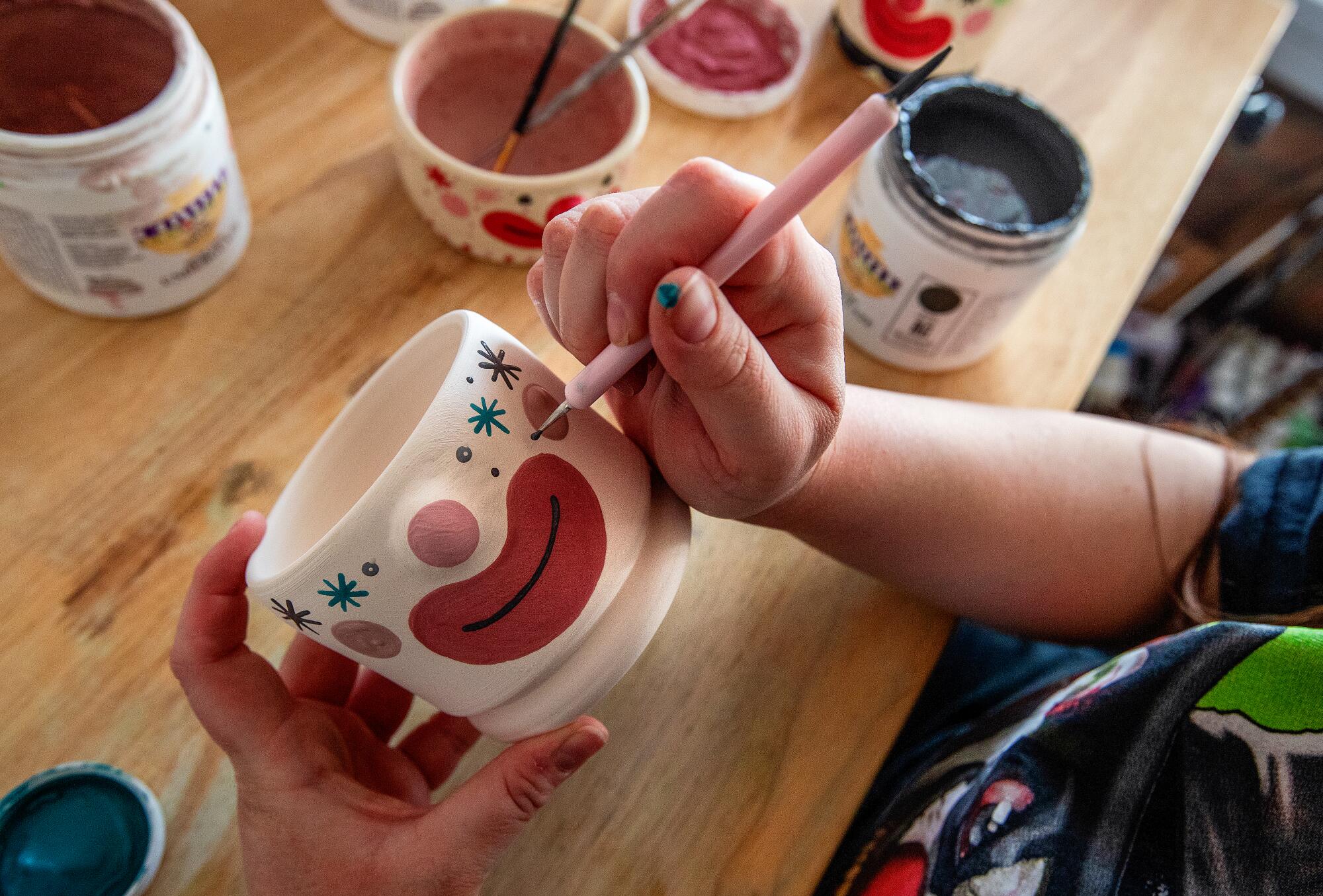
Yousefi paints one of his clown mugs.
(Mel Melcón / Los Angeles Times)
That motivated her to enter a site called Share oven, where he was able to connect with a woman named Candy who rents her oven in East Hollywood. This allowed Yousefi to begin using deeper colors in her ceramics and helped her accept larger orders.
Over the course of 2022, Yousefi also began selling his clowns at local events and stores. Her friends helped her by promoting her work to local vendors while they shopped, connecting her with stores like Cry Baby Rodeo and the Midnight Hour Records. By the end of the year he had already sold hundreds of clowns, but when a tiktok video When giving a clown mug to a popular YouTuber went viral last December, his orders increased significantly.
Yousefi has had a hard time feeling confident in her own work. Less than a year away from earning a living wage as an artist, she still jokes that her clowns are just little “goofballs” made with her “goofy hands,” but she's doing her best to value the art. her.
“My whole life I have had problems with my self-esteem and realizing that I am a special person, like we all are,” she said. “It’s been interesting to see how that translates to my business.”
Even when he gradually raised his prices from $18, which barely covered material costs, he worried that customers would lose interest altogether. “Last year around this time I was selling them for $30,” Yousefi said as we spoke last month. “Each one takes me hours, so I think I made $5 an hour. And so many people, people who come to my table; my therapist; My friends have told me: 'You need to raise your prices.'”
She eventually raised her price to $50, which terrified her. “I had convinced myself that people would say, 'Are you crazy? Stop following; block; report,'” she said. But it turned out that no one questioned it. He now charges around $70 for his clown mugs, allowing him to earn enough to consider it his full-time job.
Yousefi often tries to find ways to change his clown content to ensure people stay engaged. In February he started a series called “Clown Roll” – inspired by another user's popular series, “Sandwich Roll” – that tends to work well.
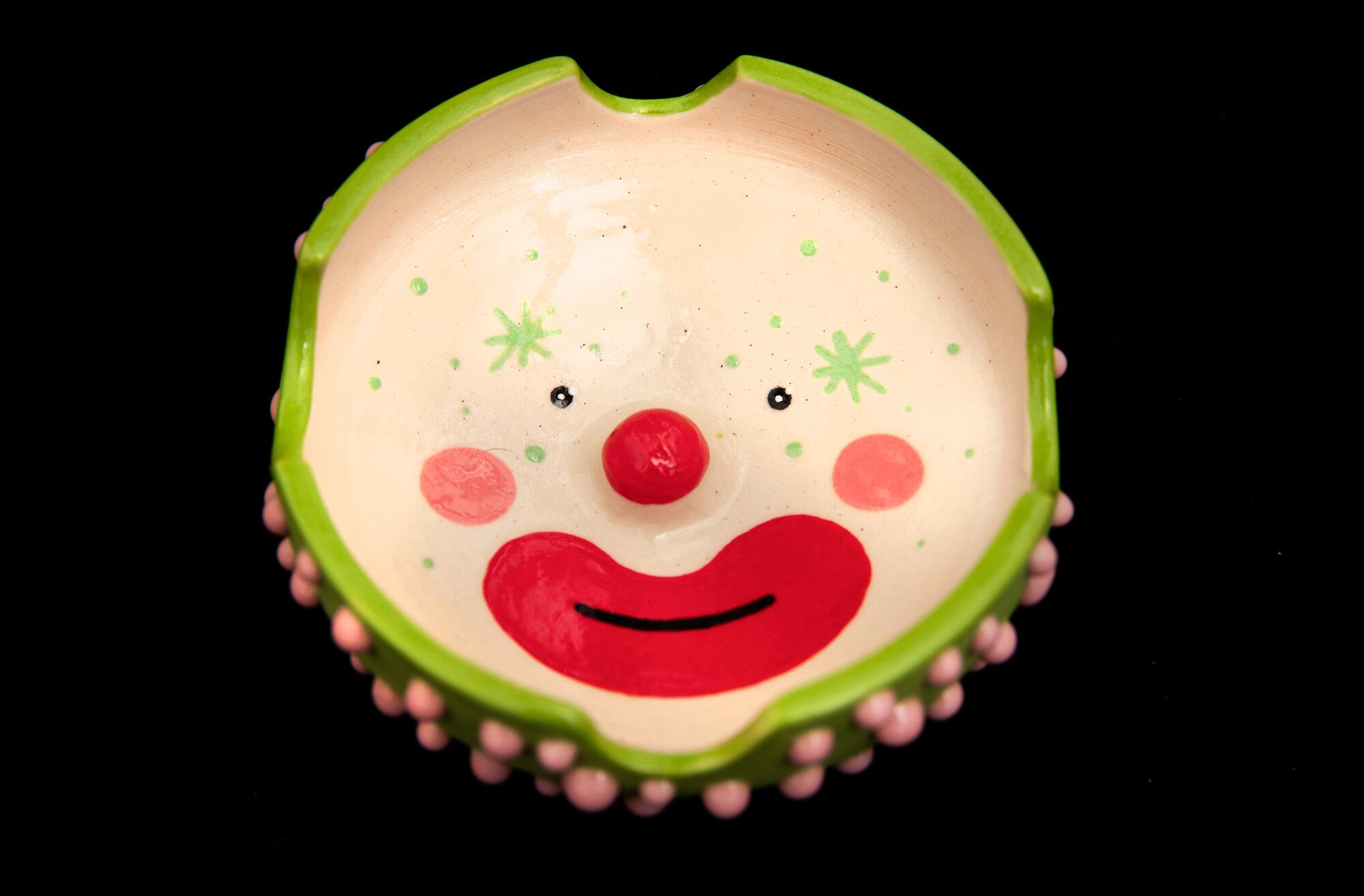
A ceramic clown ashtray.
(Mel Melcón / Los Angeles Times)
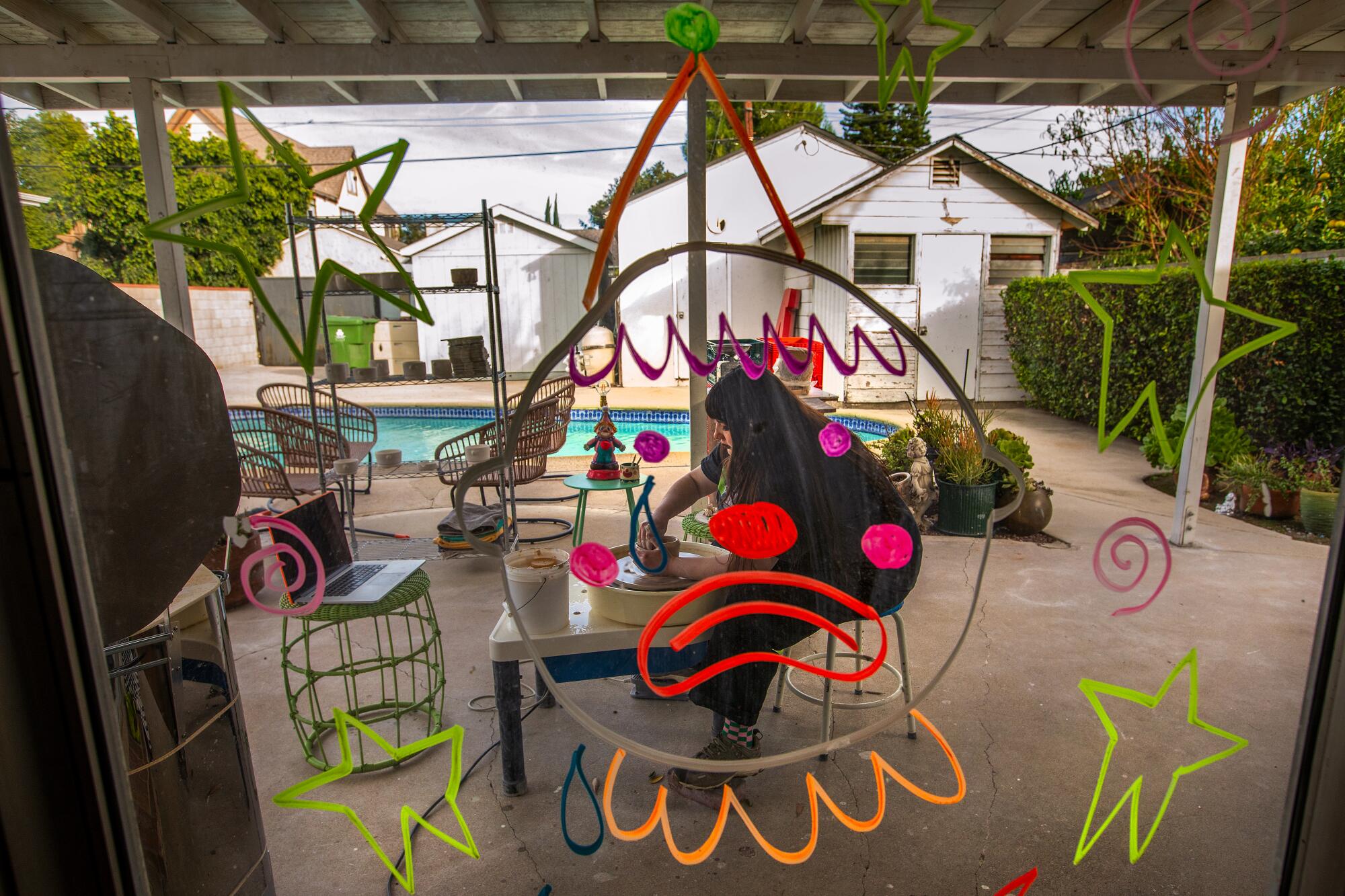
Yousefi works with clay, spinning on a potter's wheel. He hopes to one day open his own studio.
(Mel Melcón / Los Angeles Times)
In November, Yousefi became the proud owner of her own full-size oven, meaning she can now bake batches of around 30 pieces in her own backyard. As we enter 2024, she hopes to slow down and reserve some time for new projects.
Eventually she would like to open her own studio, where people could play with colored nail polishes and let their creativity run wild.
“I like nostalgic, silly, child-like pieces, and I would love to have a studio that looked like that,” she said. “Many of the studios in Los Angeles are beautiful spaces, but very minimalist. I would make it very colorful and clownish.”
But even as he dreams of new artistic goals, Yousefi won't abandon clown city completely.
“If you really think about it,” he said, “we're all just clowns in the silly circus of life.”

